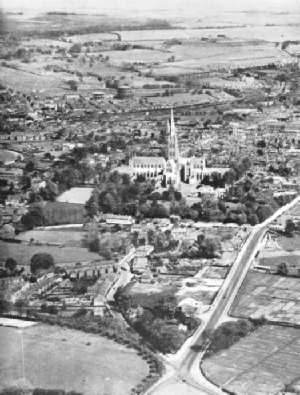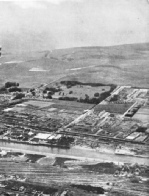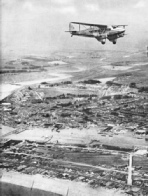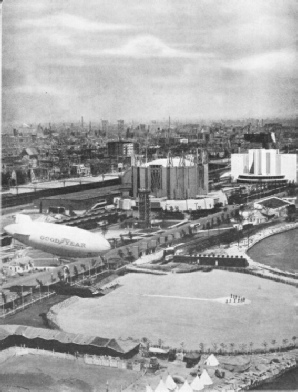

© Wonders of World Aviation 2015-
Part 18
Part 18 of Wonders of World Aviation was published on Tuesday 5th July 1938, price 7d.
This part included a central photogravure supplement showing landmarks from the air, illustrating the article on The Pupil Becomes a Pilot. The final section of the photogravure supplement illustrates a Goodyear airship landing. It illustrates the article How Airships Are Flown.
The Cover
This week’s cover shows a Supermarine Stranraer flying boat in flight near Eastleigh, Hampshire. This type of flying boat has two Bristol Pegasus X nine-cylinder radial air-cooled engines. The span of the flying boat is 85 feet, the length 54 ft 10-in and the height
21 ft 9-in.
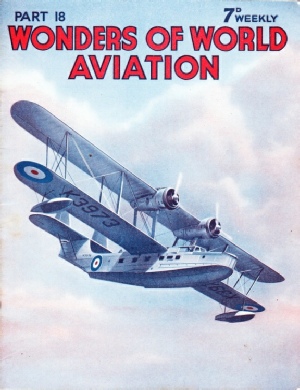
Contents of Part 18
Survey in the Empire
(Part 2)
American and Canadian Pioneers
The Pupil Becomes a Pilot
The Pupil Becomes a Pilot (photogravure supplement)
The Pupil Becomes a Pilot Photogravure Supplement - 2
LARGE AREAS OF WATER such as rivers, harbours and the sea are the best features by which a pilot can locate his position. This picture shows a view of the country immediately east of Shoreham airport. The aircraft is a Jersey Airways Express Air Liner which has just left the aerodrome. Pilots of private aeroplanes give way to commercial aircraft whenever possible.
The Pupil Becomes a Pilot:
Photogravure Supplement
CATHEDRALS OR CHURCHES WITH SPIRES make good landmarks from the air, and are shown on maps by a cross. From this view of Salisbury the pilot would verify where he was by noting the position of the cathedral in relation to the river crossed by the wide road in the foreground. By thus noting one feature in its relation to another the pilot avoids the possibility of mistaking one town, railway or other landmarks for another.
How Airships Are Flown:
Photogravure Supplement
THE LANDING CREW waiting for the Goodyear airship Puritan to reach the ground. This photograph, taken at Chicago on the occasion of the Exposition in 1930, shows how an airship may be manoeuvred into a small space. The Puritan, built in 1928, with an original volume of 96,000 cubic feet, was later increased to 123,000 cubic feet. She has two engines of 290 horse-power, a cruising speed of 53 mph, and carries six passengers with a crew of two. By June 1936 she had flown 407,704 miles and carried 44,398 passengers without an accident.
